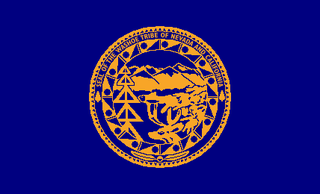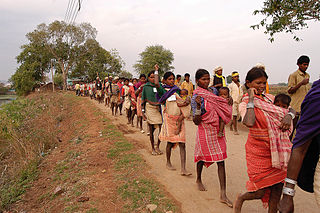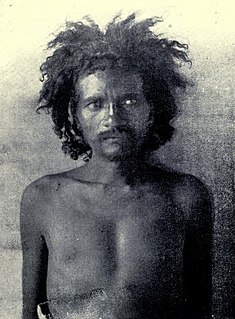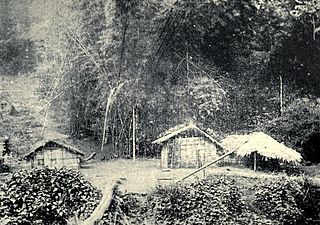Related Research Articles

Wayanad, is an Indian district in the north-east of Kerala state with administrative headquarters at the municipality of Kalpetta. It is the only plateau in Kerala. The Wayanad Plateau forms a continuation of the Mysore Plateau, the southern portion of Deccan Plateau. It is set high in the Western Ghats with altitudes ranging from 700 to 2100 meters. Vellari Mala, a 2,240 m (7,349 ft) high peak situated on the trijunction of Wayanad, Malappuram, and Kozhikode districts, is the highest point in Wayanad district. The district was formed on 1 November 1980 as the 12th district in Kerala, by carving out areas from Kozhikode and Kannur districts. An area of 885.92 km2 of the district is forested. Wayanad has three municipal towns—Kalpetta, Mananthavady and Sulthan Bathery. There are many indigenous tribes in this area. The Kabini River, a tributary of Kaveri River, originates at Wayanad. Wayanad district, along with the Chaliyar valley in neighbouring Nilambur in Malappuram district, is known for natural gold fields, which are also seen in other parts of the Nilgiri Biosphere Reserve. Chaliyar river, which is the fourth longest river of Kerala, originates on the Wayanad plateau. The historically important Edakkal Caves are located in Wayanad district.

The Flathead Indian Reservation, located in western Montana on the Flathead River, is home to the Bitterroot Salish, Kootenai, and Pend d'Oreilles tribes – also known as the Confederated Salish and Kootenai Tribes of the Flathead Nation. The reservation was created through the July 16, 1855, Treaty of Hellgate.

The Washoe or Wašišiw are a Great Basin tribe of Native Americans, living near Lake Tahoe at the border between California and Nevada. The name "Washoe" or "Washo" is derived from the autonym Waashiw in the Washo language or from Wašišiw (waší:šiw), the plural form of wašiw.

The Salinan are a Native American tribe whose ancestral territory is in the southern Salinas Valley and the Santa Lucia Range in the Central Coast of California. Today, the Salinan governments are now working toward federal tribal recognition from the Bureau of Indian Affairs.

The Chenchus are a Dravidian tribe, a designated Scheduled Tribe in the Indian states of Andhra Pradesh, Telangana, Karnataka and Odisha. They are an aboriginal tribe whose traditional way of life been based on hunting and gathering. The Chenchus speak the Chenchu language, a member of the Dravidian language family. In general, the Chenchu relationship to non-tribal people has been largely symbiotic. Some Chenchus have continued to specialize in collecting forest products for sale to non-tribal people. Many Chenchus live in the sparse and deciduous Nallamala forest of Andhra Pradesh.

Khonds are a tribal community in India. Traditionally hunter-gatherers, they are divided into the hill-dwelling Khonds and plain-dwelling Khonds for census purposes; all the Khonds identify by their clan and usually hold large tracts of fertile land but still practice hunting, gathering and slash-and-burn agriculture in the forests as a symbol of their connection to and ownership of the forest. Khonds speak the Kui and Kuvi languages and write them in Odia script.

The Cholanaikkans are an ethnic group of India. They primarily inhabit the southern Kerala State, especially Silent Valley National Park, and are one of the last remaining hunter-gatherer tribes of the region. The Cholanaikkans speak the Cholanaikkan language, which belongs to the Dravidian family.
The Paliyan, or Palaiyar or Pazhaiyarare are a group of around 9,500 formerly nomadic Dravidian tribals living in the South Western Ghats montane rain forests in South India, especially in Tamil Nadu and Kerala. They are traditional nomadic hunter-gatherers, honey hunters and foragers. Yams are their major food source. In the early part of the 20th century the Paliyans dressed scantily and lived in rock crevices and caves. Most have now transformed to traders of forest products, food cultivators and beekeepers. Some work intermittently as wage laborers, mostly on plantations. They are a Scheduled Tribe. They speak a Dravidian language, Paliyan, closely related to Malayalam.

The United Auburn Indian Community (UAIC) is a federally recognized Native America tribe consisting mostly of Miwok Indians indigenous to the Sacramento Valley region.
About 104 million indigenous people in India are members of Scheduled Tribes, which accounts for 8.6 % of India's population. In the census of India from 1871 to 1941, tribals have been counted in different religions from other religions, 1871, 1881 (Aboriginal), 1891, 1901 (animist), 1911 (Animist), 1921 (Primitive), 1931, 1941 (tribes), However, in the 1951 census religion of tribals was not mentioned. In the 1961 census the religion of the tribals was mentioned as Saridharam, which is actually the religion of the Santal tribes of India. In 1971 also the religion of the Santal tribes was mentioned as Saridharam. In the 1981 census again no religion of any Indian tribe was mentioned. However again in the 1991 census the Santal religion Saridharam was mentioned as the religion of the Santal tribe. It should be mentioned that Saridharam is the recognised tribal religion of the Santal tribe of India and it comes under the purview of Special Marriage Act, 1954. The Santals and other Indian tribal communities are not Hindus, and do not belong to any Indo-Aryan religion like Hindu, Islam, Christianity, Buddhism, Sikh, Jainism and Persian. Many other Indian tribes adhere to their own traditional Indian tribal religions, often mistakenly syncretised with one or more of the Indo-Aryan religions like major religious traditions of Hinduism, Buddhism, Islam or Christianity and often under ongoing pressure of cultural assimilation.

Yali are a major tribal group in Papua, Indonesia, and live to the east of the Baliem Valley in the Papuan highlands. The Dani word for "lands of the east" is "yali", from where the Yali took it, without it being a self-identification for their tribe.
Kattunayakar are a designated Scheduled Tribe in the Indian states of Andhra Pradesh, Karnataka, Kerala and Tamil Nadu.
The Parahiya are a Hindu caste found in the state of Uttar Pradesh in North India.

Tribals in Kerala are the tribal population found in the Indian state of Kerala. Most of the tribals of Kerala live in the forests and mountains of Western Ghats, bordering Karnataka and Tamil Nadu.
Eranadan or Aranadan is a Dravidian language spoken by several hundred people, predominantly in the Malappuram District of Kerala state, India. It is similar to Malayalam and Tamil, and also contains elements of the Kannada language. It is also known as Aranatan or Malappuram Bhasha.

Particularly vulnerable tribal group (PVTG) is a government of India classification created with the purpose of enabling improvement in the conditions of certain communities with particularly low development indices.
Lakshminarayanapuram Ananthakrishna Krishna Iyer was an Indian anthropologist and a writer of several books on the subject. He was the head of the department of Anthropology at the University of Madras and was credited with studies on the tribal and scheduled caste people of Kerala, a work initiated by his father, L. K. Ananthakrishna Iyer, himself a noted anthropologist. Anthropology in India, Social History of Kerala, a two-volume historical study and The Travancore Tribes and Castes, a three-volume account of the tribal people of southern Kerala are some of his notable works. The Government of India awarded him the third highest civilian honour of the Padma Bhushan, in 1972, for his contributions to science. His sons, L.K. Ananthakrishnan,L. K. Balaratnam, is also a known anthropologist. Dr L.K. Ramachandran noted Scientist/ Bio-Chemist/> L.K. Padmanabhan His daughters, L.K. Lakshmi, L.K. Kamalam, L.K. Bhagirathy and L.K. Parvathy

Kurumbas (or) Kurumbar (Malayalam : കുറുമ്പർ )(Kannada : ಕುರುಂಬ) are a designated Scheduled Tribe in the Indian states of Karnataka, Kerala and Tamil Nadu. The Kurumbar are one of the earliest known inhabitants of the Western Ghats, who are engaged in the collection and gathering of forest produce, mainly wild honey and wax. The members of this community are short, have dark skin, and have protruding foreheads.

The Kadar are a tribal community in India, a designated Scheduled Tribe in the states of Tamil Nadu, Karnataka, and Kerala. They are an aboriginal tribe whose traditional way of life has been based on hunting and gathering.The People of Paraiyar Community claims that Kadar is part of Paraiyar who lives and take care of forest and forest lives.
The Eravallan are Adivasi, a designated Scheduled Tribe in the Indian state of Kerala. They are an aboriginal tribe whose traditional way of life has been based on hunting and gathering.
References
- ↑ Kakkoth, Seetha (2004). "Demographic profile of an autochthonous tribe: the Aranadan of Kerala" (PDF). Anthropologist. 6 (3): 163–167. doi:10.1080/09720073.2004.11890848. S2CID 76518009 . Retrieved 5 April 2011.
- ↑ "KIRTADS | Tribals in Kerala".
- ↑ "UNIT 3 HUNTING AND GATHERING" (PDF). egyankosh.ac.in. Retrieved 2021-04-03.
- ↑ "Tribal Communities of Kerala". December 18, 2014.